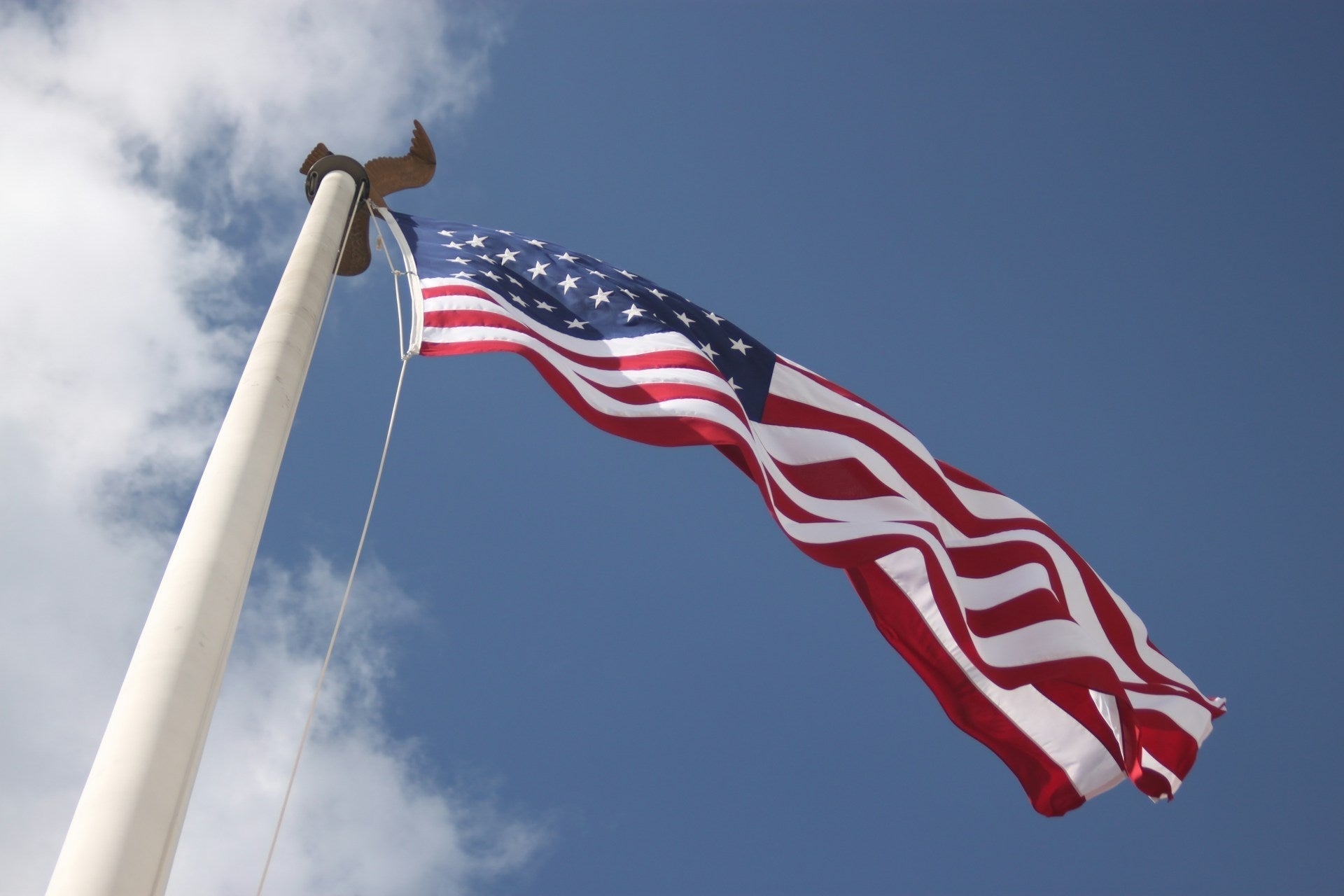
· By Drew Whitmore
Understanding Flagpole Wind Ratings
What You Need to Know About Flagpole Wind Ratings
A strong flagpole should do more than stand tall—it should stand up to the elements.
When you're investing in a permanent American flagpole, understanding wind ratings is critical. It also plays a key role in flagpole safety—just like knowing when it's safe to be flying the american flag in bad weather.
These ratings determine how much wind force your pole can withstand without bending, breaking, or toppling over.
Let’s break down what wind ratings mean, why they matter, and how to choose the right strength for your location—especially if you're using our americana 24ft flagpole kit built for long-term durability.
What Is a Flagpole Wind Rating?
A flagpole's wind rating is the maximum wind speed (measured in miles per hour) that the pole can safely endure, factoring in the size and weight of the American flag it flies.
These ratings are often based on a standard flag size (typically 3x5 or 4x6 feet) and assume the pole is installed correctly in a secure footing.
Higher wind ratings indicate better resilience in storm-prone or high-wind areas.
Why Wind Ratings Matter for Homeowners
A beautiful flagpole is meant to last for decades. But if you install one without checking the wind rating for your region, you risk costly damage.
From bent shafts to complete pole failure, underestimating wind stress can lead to safety hazards and preventable replacements—issues often covered in our flagpole safety tips for homeowners.
That’s why premium poles come rated to handle everything from mild breezes to hurricane-force gusts.

How Are Wind Ratings Calculated?
Wind ratings are influenced by several key factors, many of which we detail in our flagpole buying guide:
-
Pole height: Taller poles face greater wind pressure and need stronger construction.
-
Flag size: Larger flags generate more drag, increasing stress on the pole.
-
Pole material and taper: Aluminum poles often perform better than fiberglass at higher heights.
-
Installation method: A deeply set, ground-sleeved pole will handle more force than one with shallow mounting.
These elements are tested under industry standards like those from the National Association of Architectural Metal Manufacturers (NAAMM).
What Wind Rating Do You Need?
Start by checking the average and extreme wind speeds for your zip code. Coastal and mountain regions will often require higher-rated poles.
As a general guide:
-
Mild wind zones (up to 70 mph): 20-25 ft poles with standard flags are sufficient.
-
Moderate wind zones (up to 90 mph): Look for wind-rated poles reinforced for larger flags.
-
Severe weather zones (100+ mph): Choose poles with hurricane-grade ratings and consider shorter pole heights for stability.
Always factor in the largest flag you plan to fly, not just the default size. And don’t forget—pole thickness matters too. See our breakdown on flagpole pole diameter explained.
Wind Ratings with and Without a Flag
Manufacturers often provide two wind ratings:
-
With flag: Lower rating, due to drag and movement from the fabric.
-
Without flag: Higher rating, based purely on the pole’s resistance.
This distinction is key, especially if you fly your American flag 24/7.

Other Tips for Wind Durability
-
Remove the flag during storms if wind exceeds your pole’s rating.
-
Use high-quality flags with reinforced stitching and brass grommets.
-
Inspect hardware regularly to catch signs of wear or stress.
Why This Matters for Flag Owners
Your flagpole isn’t just a display piece—it’s a symbol of pride and permanence. That’s why we recommend starting with a premium american-made flag from our collection, built to last in all conditions. Wind ratings ensure that symbol can stand tall year-round.
Understanding your environment and choosing the right rating protects your investment, your property, and your american flagpole setup, especially if you're considering an upgrade.
For anyone flying Old Glory with honor, performance under pressure isn’t optional—it’s essential.
